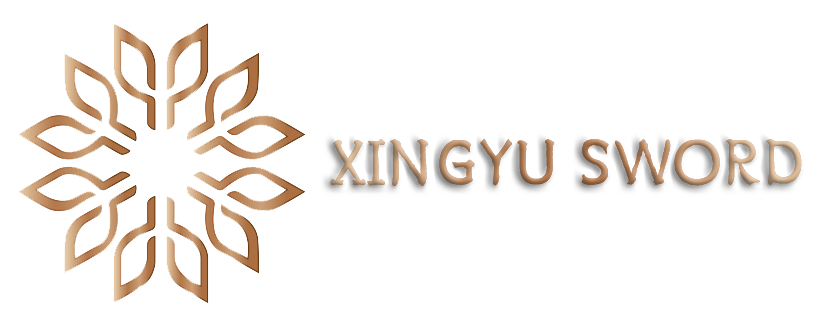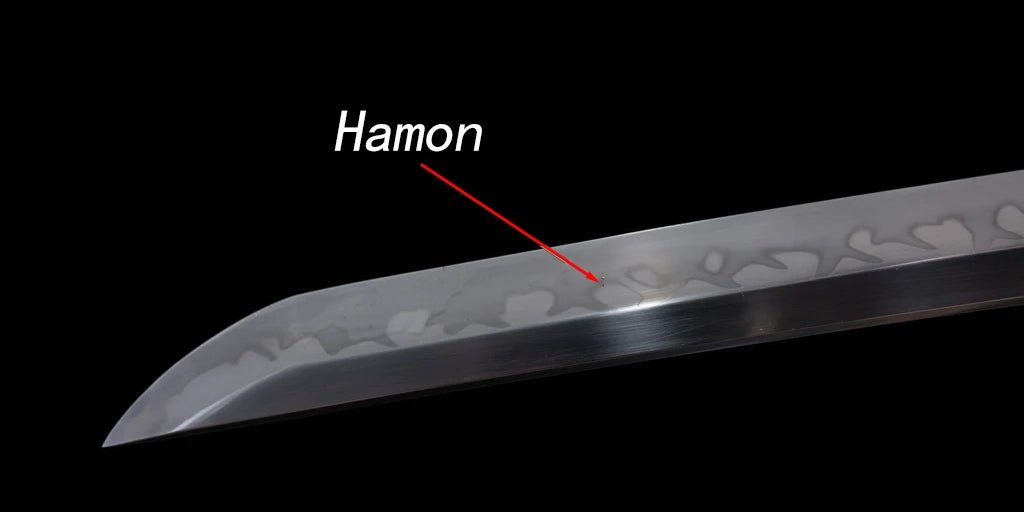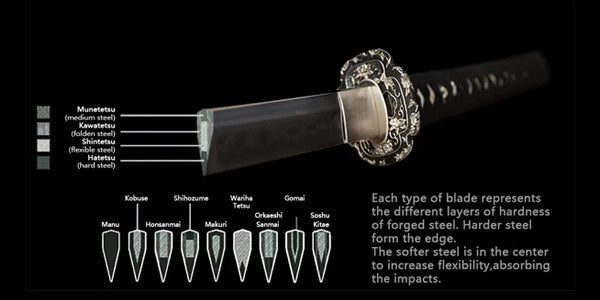Grind-The key to Katana sharpness

How sharp should katana be?
The katana is used in different places and requires different levels of sharpness. Thin blades are suitable for assassination, but are easily nicked when encountering iron armor, and thick blades are battlefield swords, but are difficult to cut into soft armor such as fur. katana has a unique artistic appeal due to the myriad of features of the blade and the steel itself that are worthy of admiration and evaluation. A good katana is one that is elegantly shaped and has a functional appearance that is taken care of. katana's ultimate purpose is to slash, so after hardening it is the final process, "sharpening", where the blade is sharpened to meet specific needs.
After the grinding process is completed, a test chop is sometimes done in order to test its performance as well as its sharpness. In ancient times, the test cuts were usually made on corpses or death row inmates, and the cuts that cut through one layer of a corpse were called "futatsu-do," two layers of a corpse were called "nijudo," and so on. The highest record in history was set by Nakanishi Jurobei, a 68-year-old samurai, who achieved "nanatsu-do" with a kanefusa sword.

How to sharpen a katana(grind)
After the sword strips are made, they are given to a specialized togi-shi for sharpening. The sharpening procedure is also very complex, using grinding stones of different coarseness and fineness, and grinding in stages from coarse to fine until the blade is as flat as a mirror, so that the desired sharpness can be achieved and the details of the hamon are more clearly visible, and the special effects such as Hada, Nio and Nie can be revealed.
Shitaji-togi (foundation grind)
Grinding can be divided into two main stages: shitaji-tog and shiage-togi. There are many types of sharpening stones produced throughout Japan. The quality varies from good to bad, and the thickness varies greatly. Grinders in different places use different types of grindstones. Nowadays, natural whetstones have become scarce due to large-scale exploitation, and artificial whetstones are also used for sharpening. However, this type of whetstone is not preferred. Usually, six different types of grindstones are used in the basic sharpening stage.
1. kongo-do: Artificial grindstones with rough particles are used for swords with large areas of rust.
2. binsui-do: Produced in the Tiancao area of Kumamoto Prefecture, it is yellow and white in color, with a fineness of about 400. The stone is medium-hard and has moderate cutting ability.
3. Kaisei: Produced in Yamagata Prefecture, tawny, with a fineness of about 600, hard stone and medium cutting ability.
4. cho-nagura: Produced in Lejun, Aichi Prefecture, yellow and white mixed, fineness 800-1200, hard stone, medium cutting ability.
5. Koma-nagura: Produced in Aichi Prefecture, South Shire, milky white, fineness about 1500, hard stone, medium cutting capacity.
6. uchi-gumori-do: Produced in Kyoto, with a dense gray color and a fineness of 3000-4000. The stone is soft and has a medium cutting capacity.
Shiage Grinding Stone - Used to complete the stage.
1. hato: A small piece cut from a high quality "inner pan".
2. jito: Cut from the "Ming Zhi Di" produced in Kyoto, it is yellow and gray-green, with a hard texture.
The uchigumori used to polish the hard part of the blade is called uchi-gumori ha-to.
gumori ha-to, and the uchi-gumori used to polish the ji portion of the blade is called
is called uchi-gumoriji-to.

Shiage-togi (final grind)
Once the basic polishing stage is completed, the polisher moves on to the
finish grinding stage. This is where the hardened part of the blade
(the cutting edge) with hazuya, and the ji (the body of the blade) with jizuya.
with jizuya. Hazuya is made from small pieces of wafer-thin, good quality uchi-gumori stone with yoshino-gami (paper) applied to the back using lacquer or glue.
Jizuya is made from very thin pieces of narutaki stone that have been broken into even smaller
pieces. Methods vary slightly depending on the polishing school, but in general this
is done with the thumb and a piece of jizuya is broken into
1 mm square pieces.

Nugui (Iron Oxide Application)
Once the final grinding stage is completed, the next stage is to apply a compound called
called nugui. Nugui is used to add luster to the blade. The method is often called
as kanahada nugui. Kanahada is an iron oxide that forms around the anvil during forging.
It is crushed into a fine powder and mixed with choji oil,
Then it is further refined by passing through yoshino-gami.

Hadori (Highlighting the Hamon) Hadori is the process of whitening the hardened area of the blade.
This is done using a very thin hazuya stone and a fine uchi-gumori slurry to highlight the shape of the hamon.
hamon.

Migaki (burnishing)
Once the hadori stage is completed, the migaki stage begins. Migaki is the
is the process of finishing the blade by polishing the mune (spine) and shinogi
ji (the area between the spine and the ridge) with a metal polishing rod,
giving the areas a dark, unique sheen.

Narume (Grinding the Point Section)
Narume (sharpening the point section) is one of the final stages of sword
of sword sharpening. Once the position of the yokote suji has been determined and applied,
the final grinding of the point section begins. A piece of fine quality hazuya is
is placed on a special mount called a narume-dai. The point section is then sharpened
taking special care not to damage the yokote-suji.




Leave a comment
This site is protected by hCaptcha and the hCaptcha Privacy Policy and Terms of Service apply.